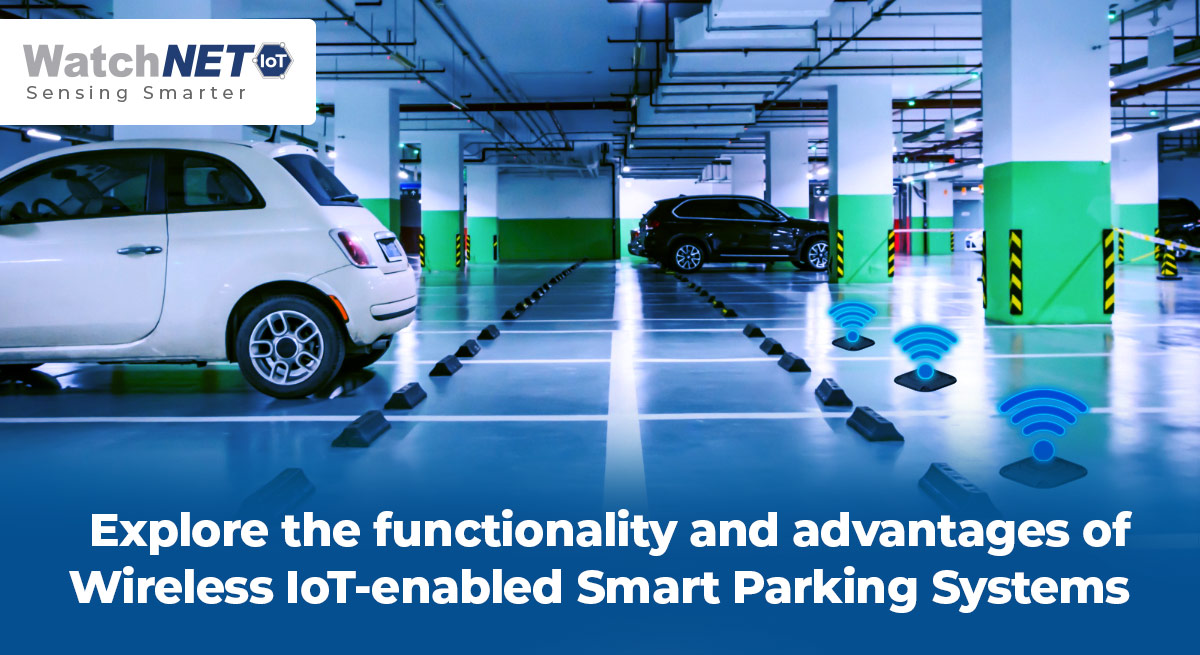Smart parking systems have become increasingly prevalent in recent years, revolutionizing the way we think about parking. With the advent of WatchNET IoT and other wireless sensor technologies, parking automation has become more efficient and user-friendly than ever before.
In this ultimate guide, we will delve into the functionality and benefits of smart parking systems, exploring how they work and why they have become such a valuable asset in urban environments. Whether you’re a business owner, a parking operator, or simply someone looking to optimize their parking experience, this guide is a must-read for understanding the future of parking technology.
What are smart parking systems and why are they important?
Smart parking systems are advanced technological solutions designed to optimize parking operations and enhance the overall parking experience. These systems utilize a network of wireless sensors, cameras, and digital signage to provide real-time information on available parking spaces.
One of the key reasons why smart parking systems are important is their ability to alleviate parking congestion and reduce traffic congestion in urban areas. By providing drivers with accurate information on available parking spots, smart parking systems help to minimize the time spent searching for parking spaces, thus reducing traffic congestion and carbon emissions.
Additionally, these systems enable parking operators to manage and monitor parking facilities more efficiently. Real-time data on parking occupancy and usage patterns allow operators to make informed decisions, optimize space utilization, and effectively enforce parking regulations.
Furthermore, smart parking systems contribute to a more sustainable and eco-friendly environment by promoting more efficient use of parking spaces and reducing the need for additional parking infrastructure. Overall, the importance of smart parking systems lies in their transformative potential to improve traffic flow, reduce emissions, and enhance urban mobility for everyone.
How do smart parking systems work?
Smart parking systems employ a combination of innovative technologies to efficiently manage parking spaces. These systems typically consist of wireless sensors, cameras, and digital signage, all working together to provide users with real-time information on parking availability.
The wireless sensors like WLRC-PS1 from WatchNET IoT are installed in individual parking spaces and can detect the presence or absence of a vehicle. This data is then sent to a central server, where it is processed and analyzed. The information is then displayed on digital signage, guiding drivers to available parking spots.
In addition to detecting parking occupancy, some systems can also analyze parking usage patterns, such as the duration of parking sessions. This data can be used by parking operators to better understand parking demand and optimize space utilization.
Moreover, cameras integrated into smart parking systems can provide security surveillance and help enforce parking regulations. They can capture images or videos of vehicles entering or leaving parking spaces, allowing operators to monitor and manage parking facilities effectively.
Overall, smart parking systems work by utilizing cutting-edge technology to provide real-time data and guidance for efficient management and utilization of parking spaces.
Benefits of Wireless Smart Parking Systems
Implementing smart parking systems brings forth a plethora of benefits for both parking operators and drivers alike. Let’s delve into some of the key advantages these systems offer:
- Enhanced Parking Efficiency: With real-time information about available parking spaces, drivers can quickly locate and secure parking spots, reducing the time spent circling the area in search of a parking spot. This not only enhances customer satisfaction but also increases parking turnover rates, allowing more vehicles to occupy the spaces.
- Optimal Space Utilization: By analyzing parking usage patterns, smart parking systems can provide valuable insights for parking operators. This data enables them to identify peak demand periods, optimize the allocation of parking spaces, and plan for future expansions accordingly.
- Increased Revenue Generation: With the ability to monitor parking durations, parking operators can develop dynamic pricing models. They can introduce variable rates based on demand, incentivizing shorter parking sessions and maximizing revenue potential.
- Improved Traffic Flow: Smart parking systems contribute to reducing traffic congestion by guiding drivers directly to available parking spots. This decreases the number of vehicles aimlessly driving around in search of parking, ultimately reducing traffic congestion and emissions.
- Enhanced Security and Enforcement: The integration of cameras in smart parking systems allows for effective surveillance and enforcement of parking regulations. Operators can remotely monitor parking facilities, quickly address any unauthorized parking, and ensure a safe and secure environment for all parking users.
The future of smart parking systems is promising, offering increased efficiency, reduced congestion, and enhanced security. Embrace WatchNET IoT systems to optimize operations, improve customer experiences, and stay ahead in the evolving parking landscape.
To learn more about implementing WatchNET IoT smart parking systems in your business or organization, contact us today. Our team is ready to assist you in assessing your parking needs, selecting the right solution, and ensuring seamless integration. Don’t hesitate to reach out for a consultation and take the first step towards optimizing your parking operations with WatchNET IoT.


